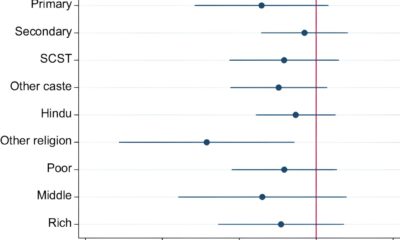Travel
Data shows how heat waves are affecting tourism in Mexico, the US and Europe

American and European studies show how intense temperatures are becoming an important factor when choosing a holiday destination.
A summer holiday often brings to mind tropical or Mediterranean beaches and sun-drenched towns and villages.
But travel trends are changing as global temperatures soar to record highs. Meanwhile, the tourism infrastructure does not seem ready for the challenge.
Extreme heat waves and heat domes in Mexico, Central America, Europe and parts of the southern US have left millions of people in sweltering temperatures, overloaded energy grids, power outages, a lack of water, health problems and, in extreme cases, even death.
Let’s explore how this environmental problem is impacting multiple countries on different continents and what travelers are doing to adapt.
Mexico is currently experiencing its worst heat wave in 50 years
With temperatures higher than 45°C, Mexico is being hit by the worst heat waves in more than fifty years, reports Juan Vázquez Montalvo, a weather forecaster at the Autonomous University of Yucatán.
According to the Minister of Health 61 people died due to the high temperatures and another 390 people have been rushed to hospital for the same reasons.
Nature also pays a price. More than 130 howler monkeys have died and dozens have died at birth in the southeastern jungles and northern areas due to abnormal temperatures.
The third heat wave of the season started May 20 and should end June 5, breaking all records in CDMX and other states, the National Weather Service reported.
There’s no place to hide. This phenomenon occurs across most of Mexico’s territory, with 46 locations breaking record temperatures. A fourth heat wave is expected soon.
US, Central America and the Caribbean are expecting a heat wave this week

States want Texas, Florida, California, Arizona And Nevada will be roasted due to a heavy heat dome this week. High temperatures are expected to break maximum records in several locations.
According to experts, “Southerly winds from the tropics transported warm, moist air northward from the equator, contributing to the unusually warm conditions,” said Shawn Bhatti, a meteorologist with the National Weather Service.
Some of the most affected locations include Sacramento, Las Vegas, And phoenix. The latter two will break their earliest temperatures ever on Thursday, with 111°F in both cities.
The Valley of Deaththe hottest and driest natural park in the US, could record the earliest temperature on record on Thursday (51.6°C/125°F), experts say.
Excessive heat is expected California with the arrival of a heating dome.
For their part, Guatemala, Belize, Dominican Republic, El Salvador, Haiti And Honduras also undergo abnormally high temperatures.
Data from 2023 shows how high temperatures have negatively affected tourism in Spain

Despite the high temperatures, Spain is not currently experiencing a “technical” heat wave. However, disturbing data has been revealed about the negative correlation between rising temperatures and tourism growth.
Using anonymized data, CaixaBank found a decline in tourism spending in cities where temperatures rose the most between 2029 and 2023. It is worth noting that 2023 was the world’s hottest year on record.
According to the report, Tourists spend up to 10 percent more in places where temperatures fall below 17°C/62°F (usually in the north of the country) than in places where temperatures rise above 23°C/73°F (usually in the south of the country).
This and other data show that Spain will become the worst-hit destination in Europe in the coming years due to high temperatures.
New travel trends driven by heat waves

Interested in learning how current and future heat waves are reshaping U.S. travel trends, Passport Photo Online questioned 1,004 Americans (50.6% male; 48.7% female; and 0.7% other) to understand what could change. Here are their key takeaways:
- First and foremost, almost 94% of travelers have observed an increase in heat waves in recent years.
- More than 77% of Americans will take heat waves into account when making travel plans in the near future.
- The most important aspects Americans will consider when traveling during heat waves include: changing daily schedules (27.15%); choosing accommodations with better cooling equipment (26.56%); and changing transportation methods (25.74%).
- 57% of holidaymakers would take out travel insurance that specifically covers disruptions caused by heat waves.
- Nearly 48% of travelers have experienced dehydration or exhaustion during heat waves.













